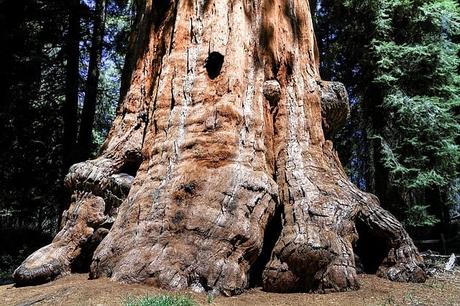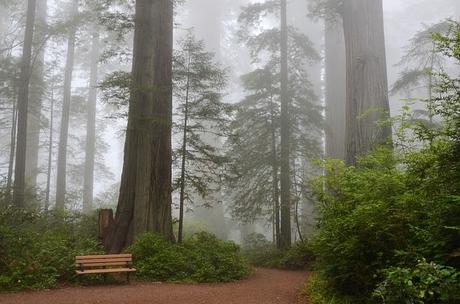A sequoia tree is a giant tree and considered the largest species in the globe. The tree that belongs to the Cupressaceous family, is mostly found in California on the Western slopes of the Sierra Nevada Mountains. Discovered in the 10th Century, the Giant Sequoia has been an endangered tree species due to the attention it attracts from loggers.
Nevertheless, due to its brittle wood, the practice has died and the tree is now protected. This article seeks to highlight 17+ magnificent facts about sequoia tree.

Fact 1: They have a specific climate. This tree can only grow in areas that are between 4000 and 7000 feet, where rich alluvial soils are found. They occur at an altitude of 1370-2250 meters above sea level. This high altitude is essential due to the presence of dry mountain air which enables opening up of cones of the sequoia tree.
It requires dry summers and cold, snowy winters to provide adequate water for the tree known to consume a lot of water for successful growth. The Sierra Nevada Mountains have a 260 mile strip on the western slopes with these ideal climatic features where the sequoia grows.
Fact 2: Their only mode of reproduction is seeds. These trees have seeds stored up in their pine cones. These seeds may take years before being spread to the ground. Unlike other plants, there are no agents of pollination or propagation. Agents such as wind cannot do the trick since the cones are enclosed.
The widely known way is by fire, which is often initiated by forest fires. Fire helps the cones to open up and the seeds are able to spread on the burnt ground.
Fact 3: They are incredibly hard. As they grow in height and breadth, they become harder. Their barks are not only thick but also very hard. This is owed to the presence of tannic acids.
Plus, the strengthened bark of the sequoia tree makes it fire resistant. Also, they are resistant to wood boring beetles which are a menace to trees and to fungal rot – a common parasite in trees. The tannin in the bark of this tree enables it to be immune to disease attack.
Fact 4: They can live up to 3000 years. The President is a tree located in California’s Prairie Creek Redwoods State Park. This sequoia tree is the oldest tree of this species having been around for about 3200 years.
In spite of this, the tree has continued to grow as it ages proving that maturity for the sequoia trees does not mean stunted growth but more growth vertically and horizontally. The Muir Snag in the Converse Basin grove in the Sequoia National Forest was the believed to be 3500 years before it died, making it the oldest sequoia tree ever.
Fact 5: Only one offspring is needed in a sequoia’s lifetime for sustenance. Given that they grow for thousands of years, a single tree needs only one offspring in order to sustain its endangered numbers. This will keep the count of trees at a constant. Still, due to forest fires and other modes of propagation, more trees get to grow in a single tree’s lifetime.
Fact 6: They have thick barks of about 3 feet thick. This is an adaptive feature of the tree that enables it to stay protected from forest fires, pests and loggers. Further, the bark is furrowed and fibrous and does not contain any resin that is flammable. This bark slows the flames of fire from getting to the wood inside.
Fact 7: They are the largest trees by virtue of volume. The General Sherman is a sequoia tree located in California’s Sequoia National Park. Though not the tallest, with a volume of 52500 cubic feet, this tree is the largest tree by mass and volume.
Also, it is arguably the largest living plant species on the globe, way much bigger than the likes of the elephants and whales which considered the biggest animals on land and in water respectively.
For example, the trunk of the General Sherman alone is over 1300 tons (2.7 million pounds), which translates to about 15 whales. Second to the General Sherman is the General Grant tree that has a volume of 46608 cubic feet. The oldest sequoia tree, the President has an amazing record of 2 billion leaves. This adds to its volume making it the third largest sequoia tree.
Fact 8: They depend on forest fires for regeneration. The sequoia tree depends on forest fires for propagation of seeds and continuation of the generation. The trees are adapted to this due to their tough fire resistant bark. Seeds are stored in cones which do not open, unless by pressure. And the pressure has to be external. Fire is the best agent for this.
Over the years, forest rangers have noted that when there are forest fires, there is a tendency of young sequoias to appear after some time. For this reason, the rangers at times set controlled fires in the forest near the sequoia trees in order to manipulate the cones into releasing the seeds. Fire heats up the soil as well as the rotted matter, therefore, preparing the soil for germination of the sequoia seeds.
Fact 9: The seed cones are less than 10 centimeters long. Though the tree is one of the biggest, the cones are 4-7 centimeters long and take almost 2 years to mature fully. Despite this, even after maturity, they can remain closed up for over 20 years as they wait to open and release seeds to the ground. Moreover, they are evergreen during the year.
Fact 10: The seed is less than one centimeter long. These trees do not grow from a shoot but from a seed as small as 5 millimeters long and a millimeter wide. These seeds are propagated from cones when they dry up due to fire.

Fact 11: It is the third-longest living tree species on the plant. Only the bristlecone pine and alerce trees can live longer. Given that the sequoia can live up to 3000 years, that is rather a short time compared to the two aforementioned trees that can live up to 5000 years.
Fact 12: They never stop growing. The sequoia only stops growing when it dies. Unlike other plant and animal species which stop growing once they get to maturity, even after thousands of years, the sequoia still grows. In its lifetime, it grows in all aspects from height, width and hardiness.
Fact 13: One sequoia tree can have as many as 11,000 cones. Over the thousands of years that one tree can live, it can have up to eleven thousand cones. Each cone has 30-50 scales which house seeds on each scale.
This means, a single cone has an average of 200-250 seeds. In other word, there are over 2200000 seeds on one tree supposing they are all matured up. A giant sequoia tree releases between 300000 and 400000 seeds annually.
Fact 14: Reproduction takes place every 20 years. Cones contain the seeds of the sequoia tree. They contain seeds after 20 years and may take longer. This time frame lengthens due to the inability of external factors to open up the cones except for forest fires.
Other than forest fires, beetles aid to open up the cones. Longhorn beetles lay eggs in the cones. The eggs turn to larvae and they furrow in the cones thus facilitating opening up and subsequent release of seeds.
Fact 15: They have a shallow and wide spread rooting system. Unlike most trees, the sequoia trees do not have tap roots. Instead they have shallow roots of about 3-4 meters deep. This does not change even in maturity. They have a very unique widespread of their roots as they cover over 4000 square meters, which is equivalent to one acre of land.
Fact 16: It takes 20 years for a sequoia tree to be mature. At this time, evergreen cones have already appeared and are ready to open up and release seeds to the ground. This takes about 12 years.
Fact 17: They can grow to almost 300 feet. The average height is between 50 and 85 meters with an average diameter of 6-8 meters. The world largest living species, the General Sherman, is 83 meters long which translates to about 275 feet. It has a diameter of 7.7 meters.
The tallest tree is the Hyperion, a red wood, with a height of 379 feet (115.5m), is a close relative of the sequoia tree. The giant sequoia trees are so wide that it would take more than seven people holding hands to surround one tree by its circumference. Also, the height of the General Sherman (275 feet) is taller than a 26 story building.
Fact 18: They have branches that are as wide as 8 feet in diameter. Also, these branches are mostly found on the upper half of the tree. The lower part is mainly characterized by a large trunk that provides a suitable base for the mammoth tree. The branches of the General Sherman are about 7 feet in diameter.

